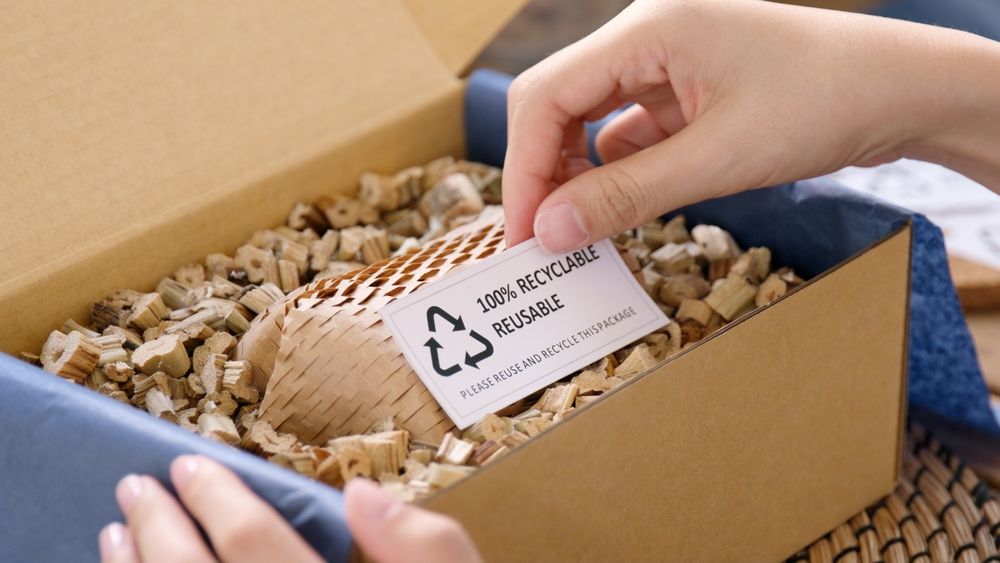Sustainable Product Returns: Minimising Waste and Maximising Value

In recent years, sustainability has emerged as a critical focus for fashion retailers, driven by growing environmental concerns and shifting consumer values. As environmental awareness grows and consumer values evolve, retailers are increasingly embracing sustainable practices as a core component of their business models. This isn't just about keeping up with trends; it's about securing long-term viability in a rapidly changing market. From reducing carbon footprints to minimising waste, sustainability in the retail industry is now integral to success.
A key aspect of this shift is the reimagining of return policies. Traditional return processes often result in significant waste and environmental harm, making them incompatible with the goals of sustainable retail. For forward-thinking retailers, developing eco-friendly return strategies is crucial to aligning profitability with environmental stewardship. By reducing packaging waste, cutting down on carbon emissions from transportation, and streamlining operations, sustainable return practices can minimise environmental impact while also reducing costs and strengthening consumer trust.
Here, we’ll delve into the latest trends in retail sustainability, offer practical advice for redesigning return processes, and showcase real-world examples of successful green retailing. By following these insights, sustainable retailers can effectively balance profitability with a genuine commitment to environmental responsibility, enhancing brand reputation and driving long-term growth.
The Rise of Sustainability in Retail Industry
Sustainability in the fashion retail industry has rapidly evolved, marking a decisive shift towards eco-conscious practices. Leading the charge are key aspects like the adoption of circular economy principles, a surge in sustainable material usage, and a concerted effort to reduce carbon footprints. Retailers aren't just responding to these issues—they’re driving them. From pioneering zero-waste stores and carbon offset programs to embracing sustainable sourcing practices, the industry is redefining what it means to be responsible.
Consumer Expectations and the Demand for Sustainability
Today's consumers are more informed and concerned about the environmental impact of their purchases. They increasingly expect retailers to demonstrate social and environmental responsibility, including transparent return policies that minimise waste and energy use.
Studies have shown that a significant portion of consumers are willing to pay a premium for collections from brands with strong sustainability credentials. This shift in consumer expectations is driving retailers to rethink their return policies, integrate sustainability into their core operations, and enhance their overall environmental impact.

How Sustainability Is Influencing Retail Returns and Operations
Sustainability is revolutionising the way fashion retailers handle returns, from rethinking packaging materials to optimising reverse supply chains. Traditional return processes, with their excess packaging and high transportation emissions, are no longer viable in a world demanding eco-conscious solutions.
Forward-thinking retailers are leading the charge by adopting cutting-edge strategies to minimise the environmental impact of returns. Digital receipts, recyclable and biodegradable packaging, and streamlined logistics are just the beginning. The influence of sustainability is also reshaping every facet of the business, from supply chain management and product design to customer engagement. Retailers are not merely adapting—they're transforming their entire business models to align with environmental imperatives, setting new standards for the industry.
In the retail industry, the conventional approach to returns has often been a straightforward process focused primarily on customer satisfaction, with less consideration for environmental impact. As sustainability becomes a pressing concern, it's essential to contrast traditional return practices with sustainable alternatives to understand the benefits and imperative for change.
Traditional Returns
Traditional return policies have been designed to prioritise convenience and customer service, but they come with significant environmental and financial drawbacks:
- Packaging Waste: Traditional returns typically involve extensive use of packaging materials. Items are often returned in their original packaging, which may include plastic, foam, and cardboard. This packaging frequently ends up in landfills, contributing to environmental pollution and waste accumulation.
- Transportation Emissions: The process of returning products involves transportation back to warehouses or stores, increasing the carbon footprint associated with shipping. Each return requires a separate shipment, adding to the volume of vehicles on the road and the associated greenhouse gas emissions.
- Operational Costs: Handling returns requires additional resources. This includes labor for processing returns, costs for restocking or inspecting items, and storage space. Often, returned items that cannot be resold are disposed of, resulting in wasted resources and increased operational costs.
- Product Disposal: Many returned products, especially those that are damaged or unsellable, end up being discarded. This not only represents a loss of materials but also contributes to environmental degradation.
Sustainable Returns
Sustainable return practices aim to mitigate the negative environmental impacts associated with traditional returns while still maintaining customer satisfaction. Key features of sustainable returns and green retailing include:
- Eco-Friendly Packaging: Sustainable returns often involve the use of minimal and eco-friendly packaging materials. Retailers may opt for recyclable, biodegradable, or reusable packaging solutions. By reducing the amount of packaging used and choosing materials with a lower environmental impact, retailers can significantly cut down on waste.
Optimised Transportation: Sustainable return practices focus on improving transportation efficiency. This can include consolidating returns to minimise the number of shipments or utilising carbon-neutral transportation options. Some retailers are also exploring local return centres to reduce the distance returned items travel.
- Cost Efficiency: While sustainable returns may require an initial investment in new systems or materials, they can lead to long-term cost savings. For instance, reducing packaging and optimising logistics can lower operational costs. Additionally, by increasing the resale value of returned items through better handling and quality control, retailers can recoup more value from returns.
- Product Lifecycle Management: Sustainable returns emphasise extending the lifecycle of products. This might involve refurbishing or recycling returned items rather than discarding them. By implementing processes to repair and resell products, retailers can minimise waste and recover value from returned goods.
- Customer Engagement: Sustainable return policies often involve educating and incentivising customers to make environmentally friendly choices. This can include offering digital receipts, encouraging returns without packaging, or providing rewards for sustainable behavior. Engaging customers in sustainability efforts helps build brand loyalty and aligns with modern consumer values.

Strategies for Implementing Sustainable Return Policies
Incorporating sustainability into your return policies not only aligns your business with growing environmental concerns but can also enhance your brand’s reputation and operational efficiency. Here’s a comprehensive guide to help you implement more sustainable return practices.
Assessing Your Current Return Policy
Evaluate Environmental Impact: Begin by analysing the ecological footprint of your current return practices. Consider factors like packaging waste, transportation emissions, and the carbon footprint associated with returns.
Identify Areas for Improvement: Pinpoint the specific elements of your return process that contribute most to environmental harm. This might include excessive packaging, inefficient logistics, or high return rates that result in additional transportation.
Redesigning Return Policies
Eco-Friendly Packaging and Materials: Transition to sustainable packaging solutions, such as recyclable, biodegradable, or reusable materials. Ensure that packaging is minimal yet protective, reducing waste without compromising product safety.
Incentives for Sustainable Choices: Encourage customers to opt for more eco-conscious return options. Offer digital receipts to eliminate paper waste and consider eliminating packaging returns where feasible, which reduces the need for redundant packaging.
Leveraging Technology and Data
Utilise Data Analytics: Employ data analytics to understand return patterns and identify trends. This can help you make informed decisions about product design, inventory management, and customer behaviour, ultimately reducing the volume of returns.
Implement AI and Machine Learning: Integrate AI and machine learning technologies to enhance your return management. These tools can optimise return processes, predict return rates, and help in making real-time adjustments to reduce unnecessary returns.
Educating and Engaging Customers
Communicate the Importance: Clearly explain to your customers why sustainable returns matter. Share information about the environmental impact of returns and how their participation in sustainable practices can make a difference.
Provide Clear Instructions and Incentives: Offer straightforward guidelines for customers on how to return items sustainably. Incentivise these practices through rewards, discounts, or recognition programs to motivate environmentally responsible behaviour.

Measuring the Impact of Sustainable Returns
To ensure that your sustainable return policies are effective, it is crucial to establish and monitor key performance indicators (KPIs) that reflect both environmental and financial outcomes. These KPIs serve as benchmarks to evaluate the success of your initiatives and guide ongoing improvements.
Key performance indicators (KPIs) for assessing the effectiveness of sustainable return policies typically include metrics such as the reduction in packaging waste, carbon emissions, and overall return rates. For instance, tracking the amount of waste diverted from landfills due to the use of eco-friendly packaging materials can provide insight into the environmental benefits of your new policies.
Similarly, monitoring the reduction in transportation-related emissions as a result of optimised return logistics can help gauge the impact on your carbon footprint. On the financial side, KPIs might include cost savings from reduced packaging and transportation expenses, as well as the return on investment for sustainability initiatives.
To accurately measure these KPIs, it is essential to use the right tools and methods. Advanced data analytics platforms can offer detailed insights into your return patterns and their environmental impact.
These tools can collect and analyse data from various sources. These sources include supply chain logistics, customer returns, and waste management systems. The tools provide a comprehensive view of how well your policy is performing. Additionally, sustainability reporting software can help track and visualise progress towards specific environmental goals, while financial management systems can assess cost savings and financial efficiencies associated with sustainable practices.
As sustainability continues to gain prominence in the retail sector, adopting eco-friendly return policies emerges as a crucial step for aligning business practices with environmental responsibility. The shift from traditional return methods to sustainable alternatives reflects a broader commitment to reducing waste, lowering carbon emissions, and enhancing operational efficiency. Retailers that embrace these changes are not only contributing to a healthier planet but also positioning themselves as leaders in a marketplace increasingly driven by eco-conscious consumers.
We're inviting thought leaders and innovators in the fashion retail industry to share their insights and expertise with Pure London x JATC. As a platform that champions forward-thinking approaches and the latest trends, we’re always looking to feature fresh perspectives on sustainability, digital transformation, customer experience, and more.
If you have a compelling story, innovative idea, or valuable expertise to share, we’d love to feature your work. See here for more information.
